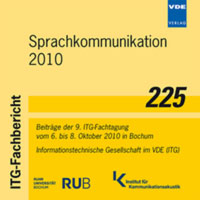Speech in noise: effects of signal processing on S/N ratio and intelligibility
Conference: Sprachkommunikation 2010 - 9. ITG-Fachtagung
10/06/2010 - 10/08/2010 at Bochum, Deutschland
Proceedings: Sprachkommunikation 2010
Pages: 2Language: englishTyp: PDF
Personal VDE Members are entitled to a 10% discount on this title
Authors:
Houtgast, Tammo; Dubbelboer, Finn; Lijzenga, Johannes (SpeechLab, Amsterdam, The Netherlands)
Lijzenga, Johannes (VU University medical center, Amsterdam, The Netherlands)
Abstract:
For estimating the effect of interfering noise on speech intelligibility, several models are available, such as the SII or the STI. These models are based essentially on the S/N ratio as a function of frequency and, in case of the STI, also do account for the effect of reverberation. Although these models have proven to be quite successful, it has been shown that they fail in one important domain, i.e. to properly reflect the effect of signal processing aimed at removing part of the noise (i.e., noise-reduction algorithms). As a result of these types of operations, STI-measurements do predict an improvement of intelligibility, whereas actual intelligibility data show no improvement. Recently, this conflict was reconciled by introducing the concept of the signal-to-noise ratio in the modulation domain (S/N-mod). This will be described in this presentation.


